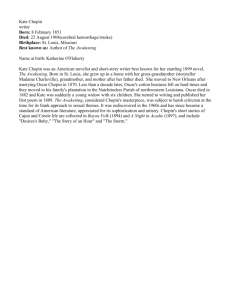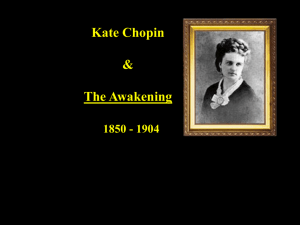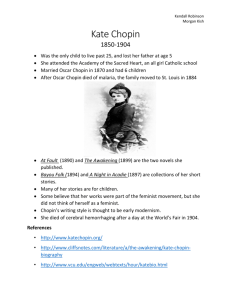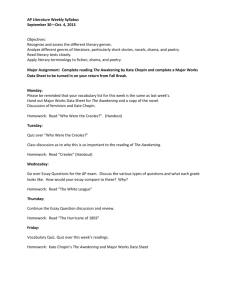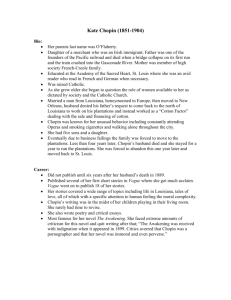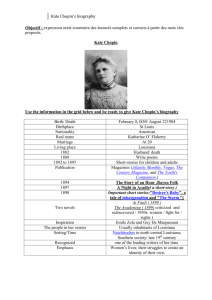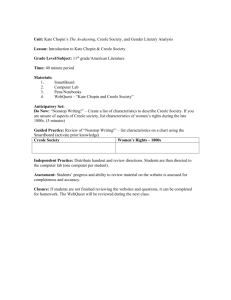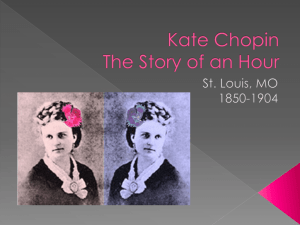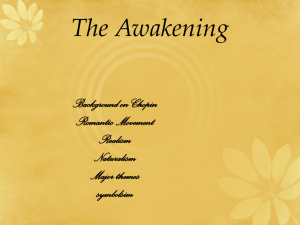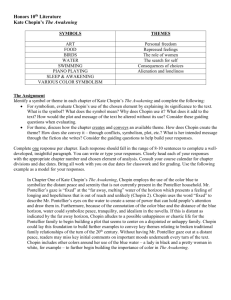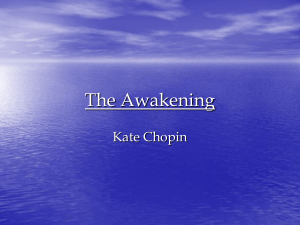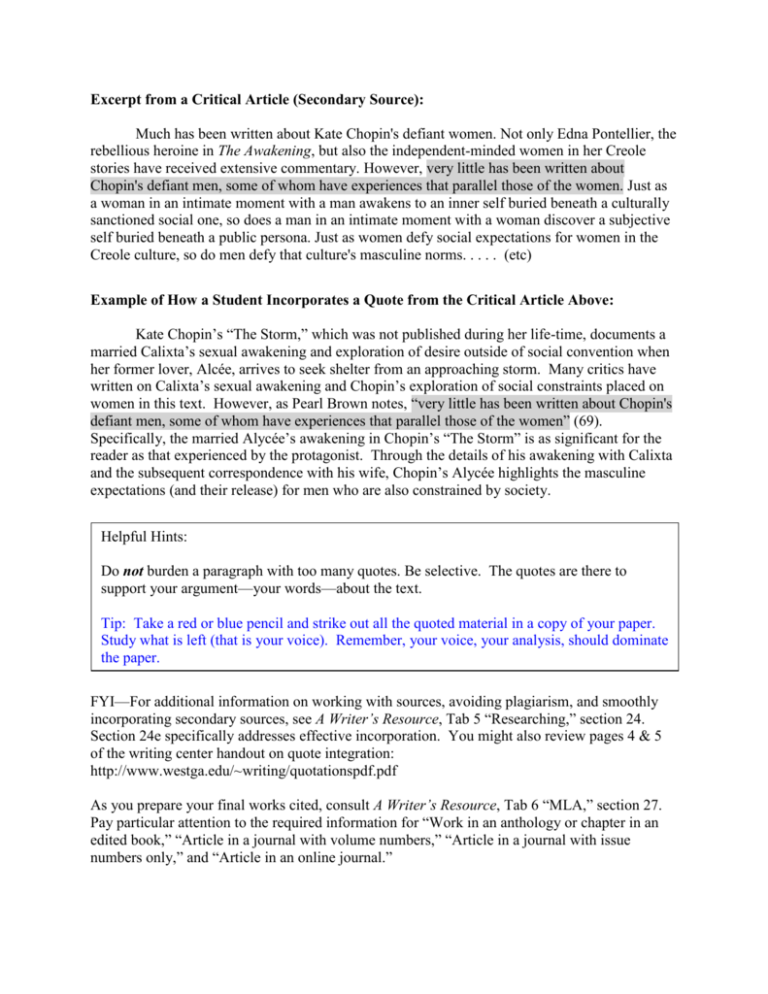
Excerpt from a Critical Article (Secondary Source):
Much has been written about Kate Chopin's defiant women. Not only Edna Pontellier, the
rebellious heroine in The Awakening, but also the independent-minded women in her Creole
stories have received extensive commentary. However, very little has been written about
Chopin's defiant men, some of whom have experiences that parallel those of the women. Just as
a woman in an intimate moment with a man awakens to an inner self buried beneath a culturally
sanctioned social one, so does a man in an intimate moment with a woman discover a subjective
self buried beneath a public persona. Just as women defy social expectations for women in the
Creole culture, so do men defy that culture's masculine norms. . . . . (etc)
Example of How a Student Incorporates a Quote from the Critical Article Above:
Kate Chopin’s “The Storm,” which was not published during her life-time, documents a
married Calixta’s sexual awakening and exploration of desire outside of social convention when
her former lover, Alcée, arrives to seek shelter from an approaching storm. Many critics have
written on Calixta’s sexual awakening and Chopin’s exploration of social constraints placed on
women in this text. However, as Pearl Brown notes, “very little has been written about Chopin's
defiant men, some of whom have experiences that parallel those of the women” (69).
Specifically, the married Alycée’s awakening in Chopin’s “The Storm” is as significant for the
reader as that experienced by the protagonist. Through the details of his awakening with Calixta
and the subsequent correspondence with his wife, Chopin’s Alycée highlights the masculine
expectations (and their release) for men who are also constrained by society.
Helpful Hints:
Do not burden a paragraph with too many quotes. Be selective. The quotes are there to
support your argument—your words—about the text.
Tip: Take a red or blue pencil and strike out all the quoted material in a copy of your paper.
Study what is left (that is your voice). Remember, your voice, your analysis, should dominate
the paper.
FYI—For additional information on working with sources, avoiding plagiarism, and smoothly
incorporating secondary sources, see A Writer’s Resource, Tab 5 “Researching,” section 24.
Section 24e specifically addresses effective incorporation. You might also review pages 4 & 5
of the writing center handout on quote integration:
http://www.westga.edu/~writing/quotationspdf.pdf
As you prepare your final works cited, consult A Writer’s Resource, Tab 6 “MLA,” section 27.
Pay particular attention to the required information for “Work in an anthology or chapter in an
edited book,” “Article in a journal with volume numbers,” “Article in a journal with issue
numbers only,” and “Article in an online journal.”

